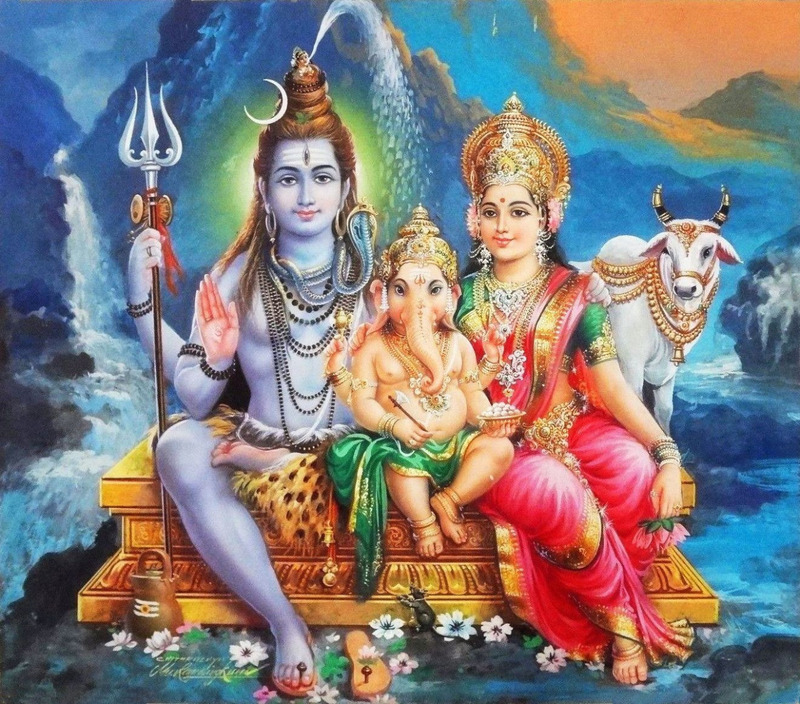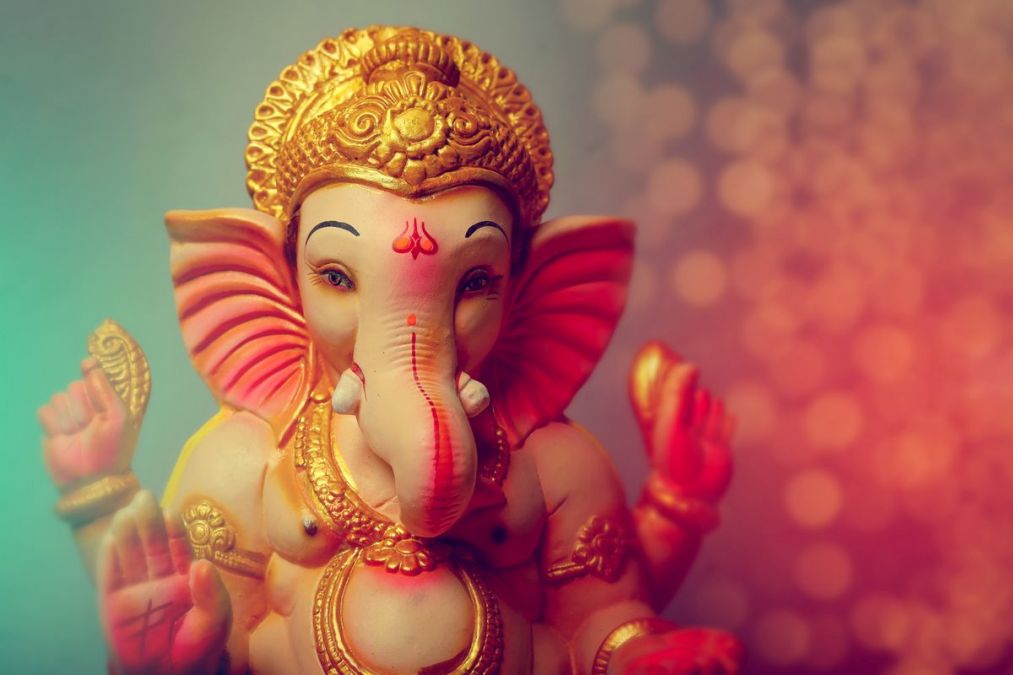Here is a beautiful song invoking Lord Ganesha…
Gaie Ganapati jagavandana
Sankara suvana bhavani nandana
Gaie Ganapati jagavandana…
(Praise be to Ganapati, the son of Shankara and Parvati, worshipped by the whole world)

Siddisadana gajavadana vinayaka
Kripasindhu sundara saba layaka
Gaie Ganapati jagavandana
(Praise be to Ganapati with the elephant face, the abode of success, the leader par excellence, the ocean of compassion, most handsome and capable of everything)

Modaka priya mudamangala data
Vidyavaridhi buddhi vidhata
Mangata Tulsidasa kara jore
Basahi siyarama mana more
Gaie Ganapati jagavandana
(Praise be to Ganapati, who is fond of modakas, who is the giver of joy and auspiciousness, who is the giver of joy and auspiciousness, who is the ocean of learning and bestower of intelligence. With folded hands Tulsidas beseeches, ‘May Rama and Sita ever dwell in my heart’)

This is the first song in Vinaya Patrika, written by Sant Tulsidas. In this series of songs in the form of letters of submission to the Lord, Tulsidasji appeals to Sri Rama in a truly soul-stirring manner. The first song is an invocation prayer to Lord Ganesha.
He is called Ganapati because He is the Lord of ganas, the demi-gods who are Lord Shiva’s attendants.
The word gana also means ‘groups’ – groups of sense organs, organs of action, pancha pranas (the five vital airs or life forces) (the five vital life forces), antahkarana (the four inner equipments) the pancha mahabhutas (the five elements) etc. He is the master, and naturally guides and leads them in the right direction.
You can also read about 108 names of Lord Ganesha with Meaning?
Ganapati is the leader, most worshipful in this world (jagvandan). If we emulate Him and master our senses, our organs of action and our vital life forces, we can also become jaga vandana, respected and revered in the world. We should learn to control ourselves, instead of trying to control others.
Ganesha is the son of Lord Shiva (Trust) and the joy of Mother Parvati (Faith). Symbolically, He stands for knowledge and is the son of shraddha (faith) and vishvasa (trust).
In Ramcharitmanas, Sri Tulsidasji says:
Bhavani sankarau vande
Sraddha visvasa rupinau
Yabhyam vina na pasyanti
Sida svantashtamisvaram.
My obeisance to Bhavani and Shankara, the form of shraddha and vishvasa, without whom we cannot see the Lord seated in our heart. Knowledge is thus the son of shraddha and vishvasa. In the Geeta, it is said: shraddhavan labhate jnanam – the person with faith attains Knowledge.
Ganesha is Siddhi Sadhana, the abode of all siddhis – achievements, accomplishments and powers. One who has control over himself and possesses faith and knowledge, becomes the very abode of all success, siddhi sadhana. All of us are born to succeed. It is a different matter that we often seem to specialize in failing! We fail because we do not perform to our potential. If we tap all our inherent talents and powers, we are sure to succeed.
Ganesha is called Vinayaka (visista nayaka) the incomparable leader. The mantle of leadership falls naturally on one who gained mastery over himself, has faith and knowledge, and commands success in all his endeavours. One of the essential qualities of a good leader is compassion. Lord Ganesha has it in abundance. He is called Kripasindhu – the ocean of compassion.
Ganesha is described as Gajavadana, with an elephant’s face. The elephant’s trunk has enormous strength and is also capable of recognizing fine distinctions. We should also develop subtle discrimination along with strength of mind and sharpness of intellect.
Tulsidasji calls the elephant faced God ‘sundara‘ – beautiful. Good looks alone do not make a person beautiful. Only a person who is disciplined, has faith, knowledge and success, is truly beautiful. If one spends all one’s time taking care of the body and cultivating physical beauty and refrains from doing anything out of fear of sullying one’s hands, it cannot be called true beauty. Ganesha’s beauty is that He is capable of doing everything – saba layaka.
Ganesha is very fond of modakas. Moda means joy. In Kathopanishad, Lord Yama tells Nachiketa: ‘sa modate modaniyam hi labdhva – he rejoices, having attained the Supreme, which is the cause for all rejoicing.’ The only joy-giving thing is our own Self. In the Panchadasi it is said: ‘iyamatma paranandah parapremaspadam yatah – this Self is of the nature of the highest joy’, being dearest (to us).
Pure Consciousness is blissful, since it is our own Self. Ganesha loves to revel in His own Self – modaka priya. For gross-minded and extroverted people, joy is only in enjoying objects of the world. They do not know the sweetness and pure bliss of the Self that is enjoyed by the wise. Sant Jnaneshwar says that Vedanta is modaka – it teaches us about our own Self.
Ganesha bestows joy, auspiciousness and goodness – mudamangala data. The very name of the Lord gives joy and auspiciousness. In Sri Ramcharitmanas,
Tulsidasji says:
Rama bhagata hita nara tanu dhari
Sahi sankata kie sadhu sukhari
Namasaprema zapata apayasa,
Bhagata hoy mudamangala basa.
For the sake of the devotees, Sri Rama assumed a human form, bore many hardships and brought joy to the saints and good people. The devotees, who chant His name lovingly, become the abode of joy and auspiciousness. Sense pleasures give us joy, but not mangalam – auspiciousness. Tapas and fasting give mangalam, but not joy, of course some ascetics find joy in performing penance also. However, even to the common man, the mere chanting of the Lord’s name gives joy and auspiciousness.
Finally, with folded hands Tulsidasji requests a boon from Lord Ganesha: ‘May Rama and Sita ever dwell in my heart.’ Rama is ananda (bliss) and Sitaji is shanti (peace). After all, in the final tally, whether they know it or not, all want only happiness and peace. Thus, the attributes of Lord Ganesha teach us many things. If we try to emulate him, we can also gain joy and peace.
Reference: http://www.chinmayamission.com/invoking-lord-ganesha-by-pujya-guruji-swami-tejomayananda/